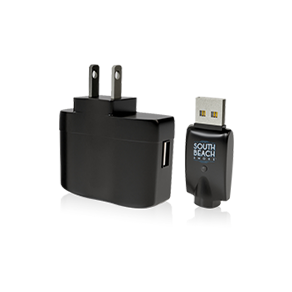- A
- B
- C
- D
- E
- F
- G
-
H
Holiday Vape Gift Guide How Do E-Cigarettes Work? How Long Do Vape Batteries Last? How Long Does Nicotine Stay In Your System? How to Deal with Smoking Relapse How to Manage Cravings and Withdrawal Symptoms When Switching to E-Cigarettes How to Pick the Right E-Cigarette Starter Kit for You How to Properly Use & Maintain Your E-Cigarette Device How To Troubleshoot Your Vape Pen Cartridge
- I
- J
- K
- L
- M
- N
- O
- P
- Q
- R
-
S
Shipping E-Cigs to Your City South Beach Smoke Mother's Day Vape Gift Guide South Beach Smoke Valentine's Day Vape Guide 2023 South Beach Smoke vs Logic E-Cigs South Beach Smoke's E-Cig Nicotine Delivery Program Spring Break Travelers E Cig Guide Summer Vape Guide 2022 Switch to Vaping to Beat the Cold
-
T
The Best Vape Pen Juice Flavors The Best Vape Temperature The Environmental Impact of Switching from Cigarettes to Vapes The Rise of Vaping Culture The Science Behind Vaping The Top Vape Influencers The Ultimate Guide to Transitioning from Smoking to Vaping: Common Mistakes and How to Avoid Them Throwing a 4th of July Vape Party Guide Tips for Vaping in the Heat Top 5 Must-Have E Cig Accessories Top 5 Vaping Blogs to Follow Top 5 Vaping Blogs to Follow Top Celebrities Who Vape 2022 Troubleshooting Common E-Cig Problems Troubleshooting Common E-Cigarette Problems
- U
-
V
Vape & Vape Juice Delivery to Your City Vape Battery Maintenance Vape Birthday Gift Guide Vape Pen Not Charging FAQ Vape Pod Vs Cartridge Which Is Better? Vape vs E Cig Comparison - Are E-Cigs and Vape Pens the Same? Vaping Abroad Vaping Etiquette - How to Vape In Public Vaping Facts vs Vaping Myths
- W
- X
- Y
- Z
- #
How to Manage Cravings and Withdrawal Symptoms When Switching to E-Cigarettes
How to Manage Cravings and Withdrawal Symptoms When Switching to E-Cigarettes
If you're a smoker, you've likely grappled with the idea of quitting more times than you'd care to admit. It's a journey fraught with hurdles, especially when you think about cravings and withdrawal symptoms. However, e-cigarettes offer a viable pathway for those looking to kick the habit. In this article, we'll delve into how vaping can help manage cigarette withdrawal symptoms and offer strategies for a smoother transition.
The Appeal of E-Cigarettes in Quitting Smoking
E-cigarettes, or vaping devices, have become increasingly popular as a tool to help smokers quit. They offer a striking advantage: the ability to control nicotine levels, which allows for a more customized approach to quitting. This control makes it easier to taper down your nicotine consumption gradually, thus reducing the severity of withdrawal symptoms. Moreover, vaping replicates the hand-to-mouth action of smoking, providing a psychological comfort that patches or gums can't offer.
Addressing Withdrawal Symptoms
Nicotine Cravings
If you're asking, "Does vaping help with cigarette withdrawal?" the answer leans toward a 'yes,' especially concerning nicotine cravings. When you switch to e-cigarettes, you can start with a nicotine level that matches your current cigarette consumption. This approach minimizes the risk of experiencing severe nicotine withdrawal symptoms. As you grow accustomed to vaping, you can progressively reduce the nicotine content in your e-liquid, thereby weaning yourself off nicotine dependency at your pace.
Psychological Factors
The mental aspect of quitting is often as challenging as the physical withdrawal symptoms. The act of smoking is linked to various social and emotional triggers, making it difficult to let go. Vaping addresses this issue by mimicking the act of smoking. Holding a vape pen, inhaling, and exhaling vapor can fulfill the psychological cravings for the "smoking ritual," making the transition easier.
Strategies for Managing Cravings and Withdrawal
Controlled Nicotine Reduction
Lowering your nicotine levels should be a calculated process. Start with a level comparable to your current smoking habit and aim to reduce it at a consistent rate. For example, if you start with an e-liquid containing 18 mg of nicotine, you might aim to switch to 12 mg after two weeks, then to 6 mg two weeks after that, and so on. This step-by-step reduction will help your body adjust to lower nicotine levels, minimizing withdrawal symptoms.
Monitor and Adapt
As you make the switch, keep tabs on your cravings and withdrawal symptoms. You may need to adjust your nicotine levels or even your reduction timeline based on how you're feeling. Remember, the goal is to quit smoking sustainably, not rapidly. It's okay to take your time and make adjustments as needed.
Utilize Support Systems
Seeking support is crucial when you're making a lifestyle change. Inform your friends and family about your quitting journey, and consider joining online forums where you can share experiences and strategies with others who are in the same boat.
Final Thoughts
Quitting smoking is an arduous task, but switching to e-cigarettes can make the journey more manageable. By providing a means to control your nicotine intake and a way to satisfy psychological cravings, vaping offers a comprehensive solution to the question, "Does vaping help with cigarette withdrawal?" With careful planning and the right support, you can navigate the challenges of withdrawal symptoms and take significant strides toward a healthier, smoke-free life.


